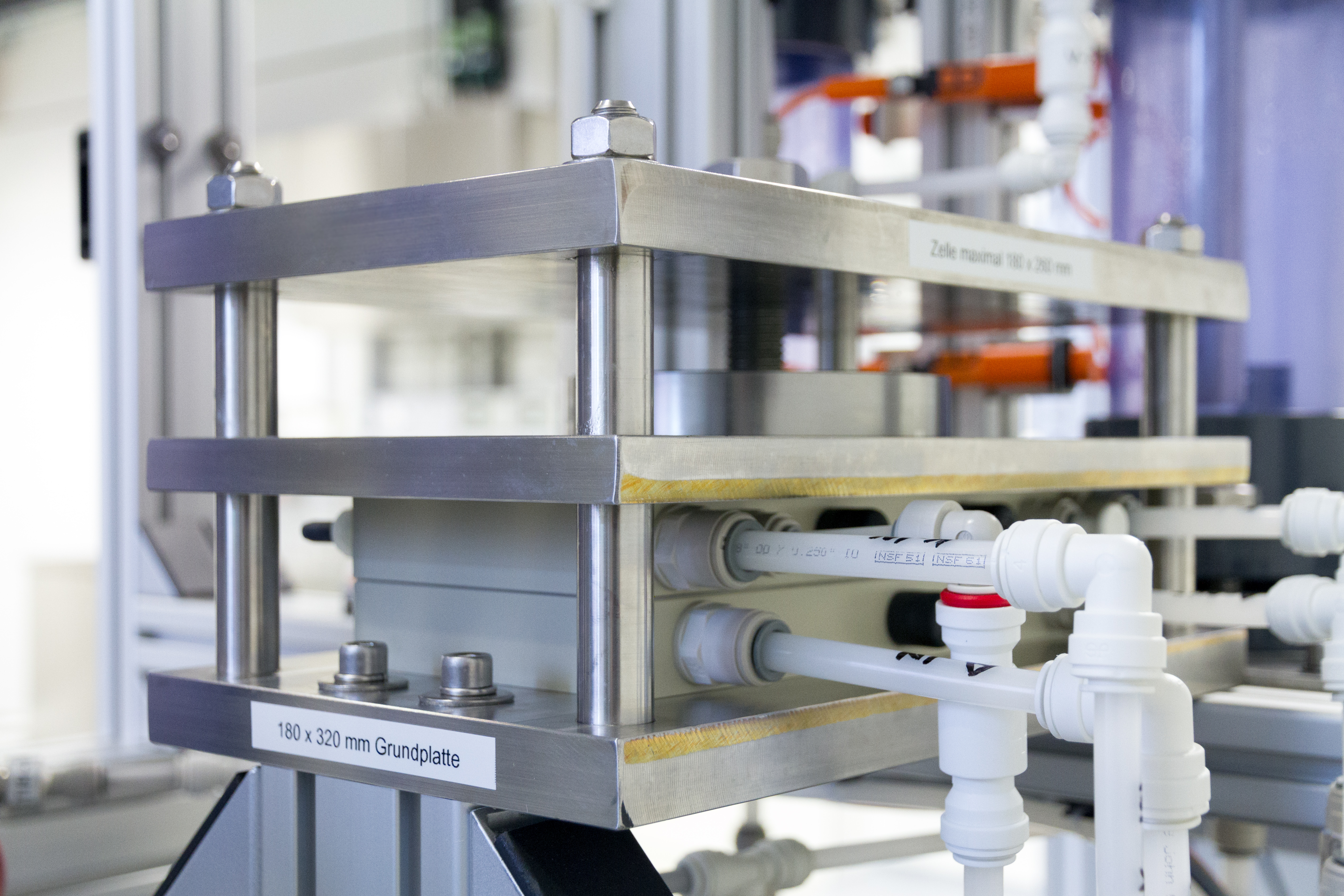The advantages of electrochemical oxidation lie in their broad range of applications, as well as in the fact that no chemicals have to be added. Oxidation takes place partly directly on the surface of the electrode, partly indirectly via the radicals and mediators formed on the electrode that act by diffusion and convection throughout the total volume of the water to be treated. Understanding these reaction components is essential to make the reaction energy-efficient and to insure a high process reliability and long service life of the electrodes. This includes appropriate electrode material for each particular application (boron-doped diamond layer BDD, iridium mixed oxide, iridium/ruthenium mixed oxide, platinum coating) as well as adjustment of the current density and control of the liquid flow. At the IGB the chemical oxygen demand (COD) and ammonium content of landfill leachate, for example, were reduced in electrolytic cells to below the effluents limits. The decolorizing of process solutions and COD degradation in the dairy industry are currently being investigated in detail.
Anodic oxidation and cathodic reduction
The water flow in the cathode compartment can be separated from the anode area by a porous layer or an ion exchange membrane and used for highly specific reduction reactions. Positive examples here are decolorizing reactions and the dehalogenization of organic molecules. At the IGB up to 90 percent of water discoloration and adsorbable organic halogen compounds (sum parameters AOX) were removed cathodically in electrolytic cells. If the cathodic reaction in the water does not work, hydrogen peroxide can be generated instead via a gas diffusion electrode and used in addition to the oxidative water treatment.
 Fraunhofer Institute for Interfacial Engineering and Biotechnology IGB
Fraunhofer Institute for Interfacial Engineering and Biotechnology IGB